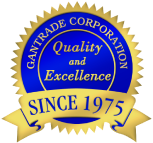Why Choose Polycarbonate Polyols for Superior Performance?
Polycarbonate polyol-based polyurethanes offer exceptional resistance to heat, hydrolysis, weathering, chemicals, solvents, and abrasion. They also deliver strong adhesive and tear properties with low moisture absorption, making them ideal for long-term durability in extreme environments. Gantrade’s ROPOL polycarbonate polyol grades enable formulators to optimize these performance characteristics in polyurethane formulations.
These FAQ serves as a guide to selecting the right ROPOL polycarbonate polyol to meet the specific requirements of your polyurethane application.



















